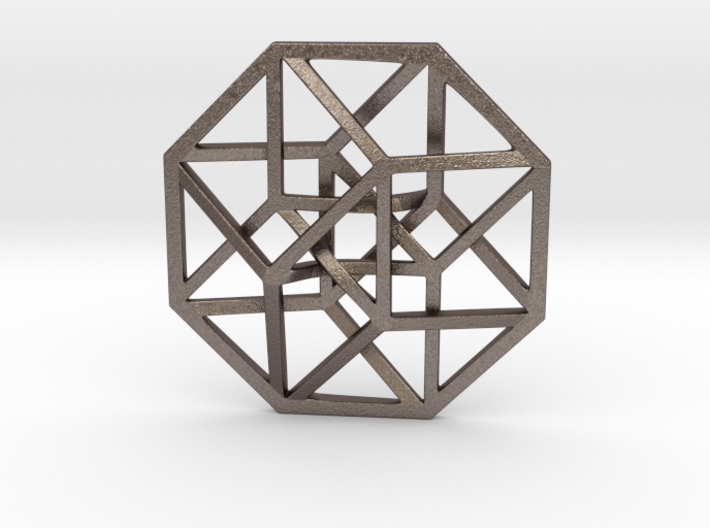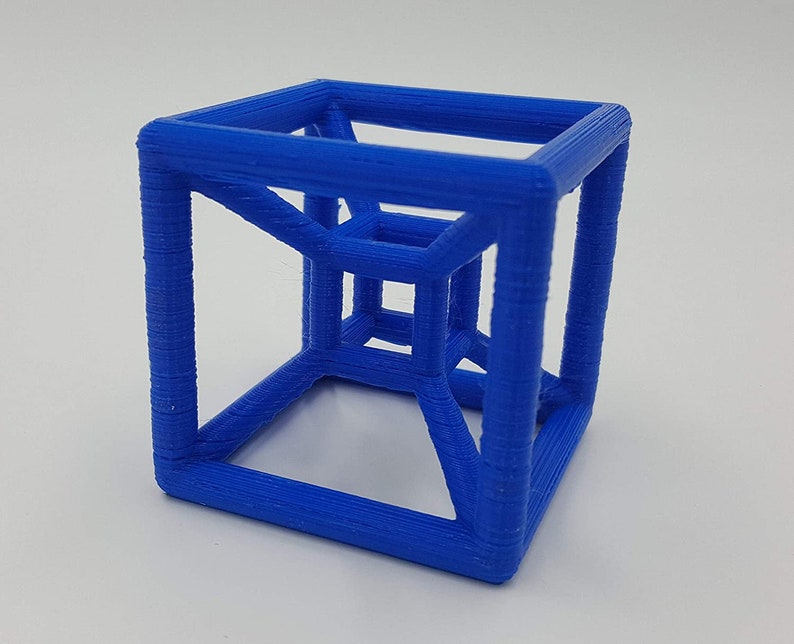

This is bivector valued, with bivectors in four dimensions forming a six-dimensional linear space with basis (e12, e13, e14, e23, e24, e34). For example a general point might have position vector a, equal to A handpicked selection of stories from BBC Future, Earth, Culture, Capital, Travel and Autos, delivered to your inbox every Friday.Mathematically four-dimensional space is simply a space with four spatial dimensions, that is a space that needs four parameters to specify a point in it. Now for the 4D it gets complicated: duplicate the 3D cube. Hypercube or tesseract Rounded or square Rounded display piece The display piece was printed with a brim to improve. Select the hypercubes position in the 4D space. Īnd if you liked this story, sign up for the weekly bbc.com features newsletter, called “If You Only Read 6 Things This Week”. Duplicate that structure and connect the ends - you get a 3D hypercube, which we usually call a cube. include rotations around a plane (characteristic of the 4D space). 6) In 1968, Noll (director of Computer Ballet) used 4D animation technique to produce computer animated.
4d hypercube full#
If you would like to comment on this story or anything else you have seen on BBC Culture, head over to our Facebook page or message us on Twitter. First 3d full length film was The Polar Express (2004). Scientists give me everything, even the immortality of the soul.” the hypercube (tesseract) is a 4th dimensional shape, and therefore all you are seeing is what we imagine it should. As he said in The Dalí Dimension, “Thinkers and literati can’t give me anything. It’s something the artist himself acknowledged. “The tesseractic crucifix would seem to extend beyond the dimensions of this world into planes unknown.” “In Dalí’s work, atomism and science appear to be the very fabric on which redemption and salvation are stitched,” says Grovier.

“Atomic structure, in other words, was on everyone's mind and how tampering with such mysteries might bring about either our destruction or survival.”įor Dalí, geometry could be a route to eternal salvation. “Cold War fears of nuclear annihilation were accelerating,” says Grovier. “It took him four years… before he was satisfied with the painting.” Crucifixion (Corpus Hypercubus) was completed in 1954: the year Cern in Geneva was founded. In this coding challenge, I visualize a 4D Hypercube (aka 'Tesseract') in Processing (Java).Challenge. “Corpus Hypercubus was not an easy problem to solve,” says Banchoff. That’s the Corpus Hypercubus.’” Dalí was able to enter the fourth dimension with the help of astronomers and mystics as well as mathematicians.Īnd he brought with him the fears of his age. Yet Banchoff recognised the shape as soon as he saw Jeaurat’s sketches. The 4-dimensional person has a 3-dimensional retina in each of its 2 eyes. We can add a dimension in the data, for example, customers. Imagine a person who lives in 4 spatial dimensions, watching a hypercube rotate. With our representation shortcut, we can easily represent the hypercube. Manage to fit the hypercube into the hyperhole Use the 4D shapes as fancy, perfectly symmetric, fair dice that have 5, 8, 16, 24, or even 120 and 600 sides. “It is based entirely on the Treatise on Cubic Form by Juan de Herrera, Philip II’s architect, builder of the Escorial Palace it is a treatise inspired by Ars Magna of the Catalonian philosopher and alchemist, Raymond Lull.” A hypercube works on the same principle, except we are talking about a cube with more than three dimensions. He claimed that Crucifixion (Corpus Hypercubus) was influenced by a 13th-Century mystic and a 16th-Century architect. We cant display a 4D hypercube in 3D, so we displayed it as a shadow.

Yet Dalí looked further back for inspiration, describing his painting as “metaphysical, transcendent cubism”. what youre seeing in those pictures of 4D hypercubes are just projections into 3D space. In his 1936 Dimensionist Manifesto, Hungarian poet and art theorist Charles Tamkó Sirató claimed that artistic evolution had led to “Literature leaving the line and entering the plane… Painting leaving the plane and entering space… sculpture stepping out of closed, immobile forms.” Next, Sirató said, there would be “the artistic conquest of four-dimensional space, which to date has been completely art-free”.Ĭubists like Pablo Picasso had already attempted to represent four-dimensional shapes on the two-dimensional canvas, excited by the theories of 19th-Century mathematicians Bernhard Riemann and Henri Poincaré. “The idea of the fourth dimension existing beyond our material world resonated for Dalí with the spiritual world transcending our physical universe.”Ī fourth dimension in art seemed for many a natural development. By breaking out of three dimensions, the artist could find new meaning in a traditional biblical scene, argues du Sautoy.


 0 kommentar(er)
0 kommentar(er)
